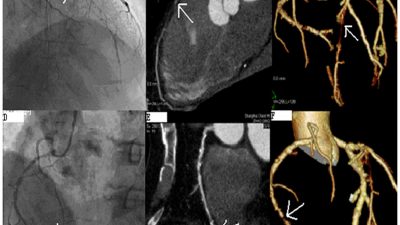Value-based care is always a discussion-starter, and federal payment programs aimed at promoting quality outcomes may be missing the mark. How do we define value, and what do some experts mean in calling attention to values-based care, rather than value-based care? This edition of the quality matters news brief touches on all of these questions with important takeaways for ambulatory surgical centers and all cardiology clinicians.
Value-based Metrics Penalize Top-Performing Hospitals – HealthLeaders
According to a new study in JAMA Cardiology, summarized by HealthLeaders, hospitals recognized by the American Heart Association and American College of Cardiology for high quality cardiac care were “more likely to be financially penalized” by federal value-based payment models than other hospitals, “despite achieving similar and/or better outcomes,” said lead author Rishi Wadhera, MD, of the Beth Israel Deaconess Medical Center Smith Center for Outcomes Research in Boston. “The findings show that federal incentives are not aligned with prevailing medical consensus on what constitutes appropriate cardiovascular care,” reads the article. Read more »
Values-based Outpatient Care: Put Patients First Even When No One’s Watching – TCTMD
According to TCTMD’s Caitlin Cox, a panel of experts at the 2020 International Symposium on Endovascular Therapy (ISET) expressed the need for caution in moving peripheral vascular interventions out of the hospital to outpatient settings, namely ambulatory surgical centers (ASCs). “Early data from ambulatory surgical centers (ASCs) and office-based labs (OBLs) across the United States do in fact suggest that invasive treatments like angioplasty and atherectomy can be done safely in freestanding facilities,” reads the TCTMD article. “But… allegations of devastating complications, overtreatment, and false diagnoses circulate throughout the healthcare community.” According to Bret Wiechmann, MD, president-elect of the Outpatient Endovascular and Interventional Society, “quality, safety, and patient selection must be as good in outpatient facilities as in hospitals. The question is how to get there.” Read more »

Accreditation for Cardiovascular Excellence Can Help Promote Values-based Care in ASCs
Our quality matters news brief took a deeper look at the question of whether ambulatory surgery centers are equipped and ready for percutaneous coronary interventions in a recent edition. Then, and now, Accreditation for Cardiovascular Excellence argues that accreditation can help organizations ensure ASCs are properly equipped, prepared and qualified to perform these procedures with quality outcomes. Meeting our openly available CathPCI standards is a comprehensive signifier of quality PCI—and the supportive ACE accreditation process can help sites meet them. ACE standards have even been recognized by Pennsylvania and Michigan for cath labs without on-site surgical backup—the only states requiring this level of review for waivers. Learn more »
Why Risk-taking is Integral to Increasing Value in Cardiology – Cardiovascular Business
On the topic of values-based versus value-based care, we found a food-for-thought perspective from October in Cardiovascular Business that takes a look how we define “value” in cardiac care and why risk-taking is an essential part of the value equation. “We’re going to define value by what is provided by what you do for society,” said Tim Attebery, DSc, MBA, CEO of the American College of Cardiology. “For patients, not stakeholders.” Some risk taking can be a positive or a negative in that value equation, according to Attebery. “Physicians who refuse to take risks will actually lose value in the long-term,” reads the article. Read more »
Improving Cardiovascular Outcomes Among Patients with Type 2 Diabetes – AJMC Newsroom
Certainly related to values-based care in improving outcomes for this significant population of cardiac patients, the American Journal of Managed Care Newsroom featured an in-depth interview with Nihar Desai, MD, MPH of the Yale School of Medicine. “Moving away from diabetes management that focused almost exclusively on glycemic control to a much broader and more patient-centered approach around reducing morbidity and mortality by addressing CV risk has happened over years and decades,” said Desai. “It starts with having a good understanding of the CV risk that patients with diabetes have and then working deliberately to assess the risk factors and modify them.” Read more »












